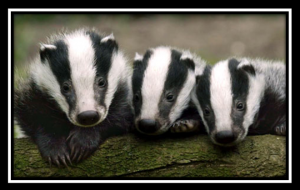News
Latest Lion Aid News
Do badgers spread Bovine tuberculosis to cattle?
Tuesday 16th April 2013
|
It wasn’t us
Sadly, given the plans by the UK Government to cull many thousands of badgers in further trials to determine whether removing badgers lessens the occurrence of Bovine tuberculosis (bTB) in cattle, it appears the epidemiology of this disease is still not well understood.
Badgers are regarded as a maintenance host and a reservoir of the disease that costs UK cattle farmers millions of Pounds each year. Not only because infected cattle need to be destroyed, but also because they need to be regularly tested and farms need to implement biosecurity measures to keep badgers away from cattle at night. Get rid of the badgers, say the farmers, and bTB has a chance of being eradicated.
This is despite overwhelming scientific evidence that badger culls are not likely to be effective and could even exacerbate the problem. Undaunted, the Government will proceed in England though Wales, having evaluated the same available information, will not cull badgers.
Recently, a paper was published in the journal PLOS Pathogens that showed how little is yet understood about bTB in cattle and badgers. Using advanced molecular genetic techniques, the researchers showed that:
This data calls for considerably more research to be conducted before any badger culling can be contemplated. You can see our analysis of the research here.
There are also some futher aspects of bTB to consider:
In short, killing badgers is not the answer and it is surprising that the move is so strongly being supported by Government while the epidemiology of the disease is not nearly fully understood.
Picture credit: http://www.savethebadger.com/
Tags: Btb, Bovine Tuberculosis, UK, cattle, badgers, epidemiology, Categories: Wildlife Diseases |
Posted by Pieter Kat at 17:37
No comments have been posted yet.
Add a new comment
Existing user
New user sign up




